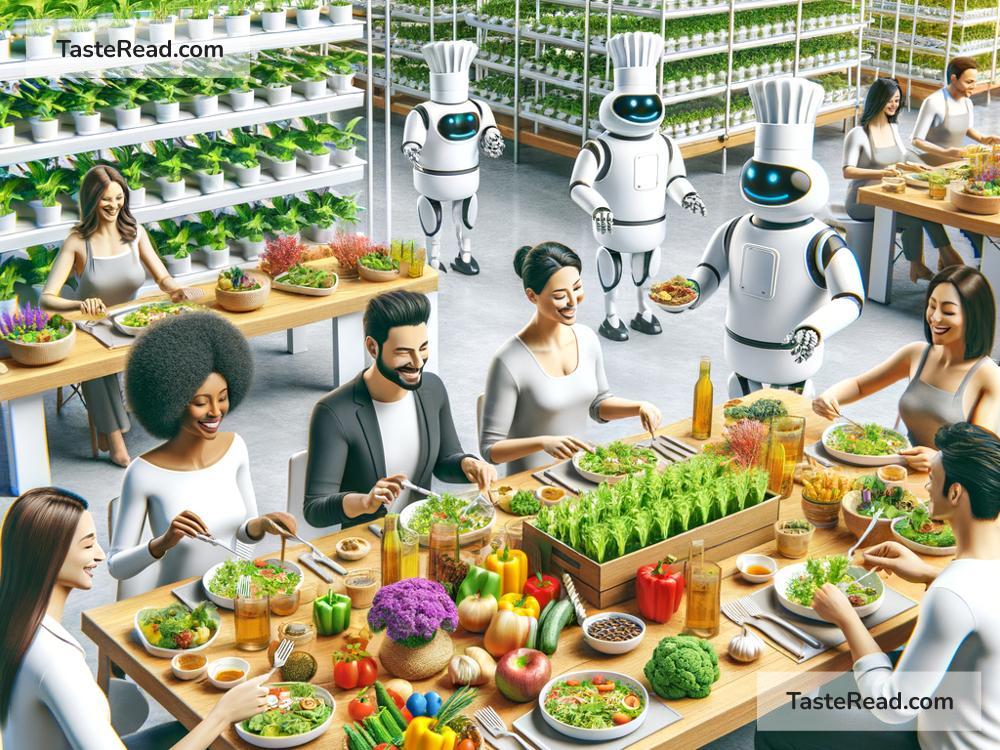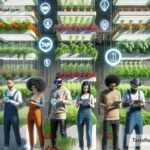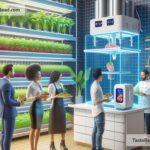The Future of Food: Participatory Systemic Models and What They Mean for Us
The world’s food system is a complicated puzzle. It touches everything, from how we grow crops and make meals to how we handle waste and protect the planet. But as the world’s population grows and climate change affects farming, the way we grow, distribute, and consume food needs to change. Thankfully, many people are working on exciting solutions to make food systems more sustainable, fair, and adaptable. One of these solutions is the use of participatory systemic models.
Let’s dive into what this means and how it might shape the future of food.
What Is a “Participatory Systemic Model”?
A participatory systemic model is a way of solving problems that brings everyone—farmers, scientists, policymakers, businesses, and regular people—together. Instead of one group deciding how things should work, everyone gets a say. This approach looks at the “big picture” of how different parts of the system interact.
Think of the food system as a web. Farmers grow food, businesses sell it, and consumers buy it. All these actions are connected. Climate, economics, health, and social issues also play a role. If one part of the web changes—like a drought affecting crops—it impacts the entire system. A participatory model ensures we address these changes together.
Why Does the Food System Need a Change?
Right now, the way food is produced and distributed isn’t sustainable. Here are a few problems:
-
Environmental Challenges: Crops depend on stable climates to grow. Rising temperatures, floods, and droughts are making farming unpredictable. At the same time, food production often creates pollution and contributes to climate change.
-
Wasted Food: About one-third of the food we produce globally goes to waste. This happens for many reasons, including inefficient transportation, strict cosmetic standards (like rejecting “ugly fruits”), and lack of proper storage.
-
Access and Fairness: Millions of people go hungry every day, yet others have access to excessive amounts of unhealthy food. There’s a gap between who gets food and who doesn’t.
-
Health Concerns: Many people rely on processed foods instead of fresh, nutritious options. This has led to rising health problems like obesity and diabetes.
The good news is that people are coming together to rethink how food systems work. Participatory systemic models could be the key to addressing these problems.
How Do Participatory Models Work in Food Systems?
Imagine a community trying to improve how it grows and distributes food. Instead of leaving decisions to a small group, everyone is invited to share their ideas. Farmers might highlight issues with soil health, local businesses could suggest ways to reduce food waste, scientists could share data about climate trends, and community members might ask for more affordable fresh produce.
Together, these groups would discuss solutions that benefit the whole system. Here are a few ways participatory models might work:
-
Local Food Networks: Communities can form their own food systems, focusing on local farms and markets. When locals work directly with farmers to plan what crops to grow and how to distribute them, it creates a more resilient and sustainable system.
-
Transparent Technology: Technology can help everyone understand food systems better. For example, farmers could use apps to share live updates about crop conditions. Consumers could use tools to trace where their food comes from and pick goods that support ethical farming practices.
-
Citizen Science Projects: Regular people can contribute to food research. For example, residents could track how urban gardening impacts air quality or family health in a neighborhood. This data could inform city-wide policies.
-
Circular Economy Models: In a circular system, resources are reused instead of wasted. For instance, leftover food could be turned into compost for farms, and food packaging could be made from biodegradable materials. These ideas work best when communities, businesses, and farmers coordinate.
Why Is Participation Important?
Participation creates ownership. When people feel involved in decisions, they’re more likely to work hard to improve them. It also brings diverse perspectives to the table. Farmers have real-world experience. Scientists understand ecosystems. Consumers know what they want. Combining this knowledge leads to better ideas.
Participation also makes food systems fairer. Traditionally, powerful groups like large corporations make many decisions about food. Participatory models give smaller voices—like low-income communities and small-scale farmers—a chance to advocate for their needs.
What Could the Future Look Like?
If participatory systemic models become common, the future of food could be transformative:
– Resilient Farming: Farms could adopt practices that protect soil health and grow crops that adapt to changing weather.
– No More Hunger: Communities could work together to ensure everyone has access to nutritious food, regardless of income.
– Healthier Diets: Fresh and local options could replace processed foods, making healthier eating affordable and convenient.
– Environmentally Friendly Systems: Food systems could reduce waste and pollution, helping to fight climate change.
This future won’t happen overnight. It will take teamwork, innovation, and policy shifts. But as more people get involved and share their ideas, big changes become possible.
Final Thoughts
The future of food lies in collaboration. By adopting participatory systemic models, we can tackle some of the world’s biggest challenges—hunger, waste, climate change, and fairness. Everyone has a role to play, whether it’s supporting local farms, advocating for food policies, or reducing waste at home. Together, we can build a food system that is sustainable, inclusive, and ready for the future.
So let’s ask ourselves: How can we get involved in shaping the food systems around us? The answer might be closer than we think—right at our kitchens, gardens, and communities.


